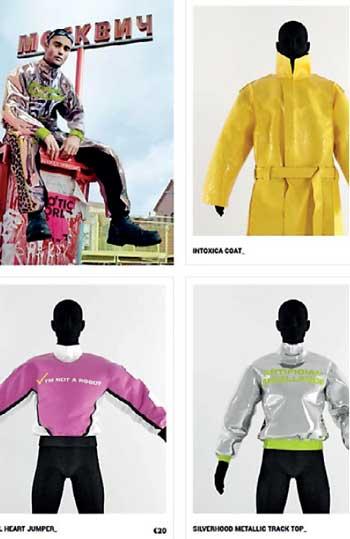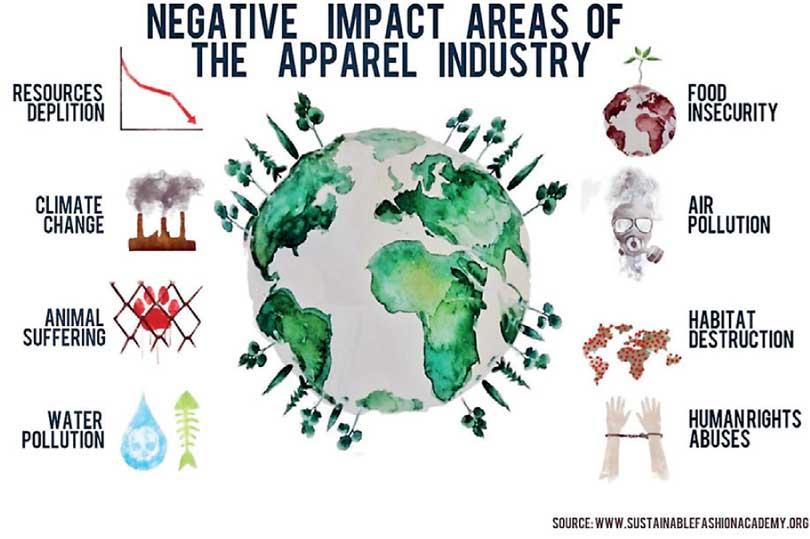The term “fast fashion” encapsulates a type of clothing that is moved from the catwalk, through the design and manufacturing process and onto chain store shelves as fast as possible with the aim to have a non-stop turnover of the latest designs and trends. The clothing is produced quickly and with low-quality materials, with the expectation from both the brand producing the clothes and the consumer is that these cheap clothes aren’t meant to last very long.
In fact, in a survey run by Barclaycard last summer on 2,000 British buyers of fashion, one in ten people bought an outfit to wear it only once, often with the aim of sharing it on social media with the purpose of improving their image. While no similar statistics could be found for Sri Lanka, in general, the global appetite for cheap fashion is only increasing. According to a recent study conducted by McKinsey and Company, global fashion sales grew by nearly 5% to $1.7 trillion last year.
Social media is one of the biggest drivers for a high turnover of clothes as the online fashion-conscious strive for likes, buoyed on by “influencers” who seem to have a never-ending stream of new outfits and accessories. But unlike influencers who receive free outfits in return for advertising, young people today are feeling the pressure to put forward a certain image on social media and are concerned with how they will be perceived by followers in regards to “wearing the same outfit twice”.
Enter, virtual fashion
With digital fashion, it allows social media users to continually update their style without having to physically own the outfit
For the average teenager or millennial, keeping up a constant stream of new clothes can not only get expensive but places a huge burden on the environment.
Scandinavian clothing company Carlings recently added an exclusive digital collection, not available in their physical line where it has already sold out completely and they are working on a second collection. Ingeline Gjelsnes from Carlings advised, “We are very aware of our industries environmental problems and the paradox that we all are a part of. We want to be at the forefront of fashion and at the same time reduce our environmental impact. This project has really opened our eyes and we truly believe digital clothing will play a big role in the future of fashion.”

Dutch online fashion brand ‘The Fabricant’ has also entered the market but differs to Carlings are they work only in the digital space. “We’ve made a very clear point of never wanting to be a physical fashion brand,” said Kerry Murphy, “We believe the world does not need more clothing. It’s an incredibly wasteful and polluting industry. That’s why we very consciously said we want to re-imagine fashion.”
How does it work?
Consumers browse through an online collection priced between 10 and 30 Euros where they select the piece they wish to purchase. According to Carling, the clothing is created as multi-layered 3D blueprints. Just like physical tailoring, each piece has a pattern with seams, notches and fabric properties like weight and sheen. They’ll insert the model into an image of the customers choosing, adapting to the lighting sources in the target image, the image is then ready to be shared on social media.
(Images: Carlings)
Addressing environmental concerns Morten Grubak from the Virtue creative agency, who came up with the Carlings campaign also advised “Right now (environmental campaigns) are always about, like, how much water did we save producing these jeans and people don’t care about that,” said Grubak.“Instead of getting angry with people doing fashion on Instagram, how can we innovatively solve that problem by adding a new platform?”
Customising your online persona with digital effects is nothing new. In the popular game Fortnight, users already spend money on customising their characters with “skins”. Photo filters on most social media platforms allow people to change their appearance, skin, hair colour or even a set of cat ears. Extending your virtual image with clothing is just another step in that direction. Although virtual fashion won’t solve the core issues of carbon emissions, over-consumption and pollution in the fashion industry, it’s certainly a step in the right direction.
Impacts of the fashion industry
- Greenhouse gas emissions from the manufacturing and worldwide transport processes
- Water pollution from chemical dyeing processes for fabrics
- Human rights abuses in the garment industries worldwide, especially in Asia, including the use of child labour
- Waste fabric from the manufacturing process
- Synthetic materials such as polyester, nylon and spandex made from petrochemicals (plastics) release “microfibers” into the water causing pollution.
- Cotton production uses a lot of water, fertilisers and pesticides
- Animals are killed for fur, wool and leather
- Stock destruction – fashion houses sometimes burn excess stock that they are unable to sell.

 Dutch online fashion brand ‘The Fabricant’ has also entered the market but differs to Carlings are they work only in the digital space. “We’ve made a very clear point of never wanting to be a physical fashion brand,” said Kerry Murphy, “We believe the world does not need more clothing. It’s an incredibly wasteful and polluting industry. That’s why we very consciously said we want to re-imagine fashion.”
Dutch online fashion brand ‘The Fabricant’ has also entered the market but differs to Carlings are they work only in the digital space. “We’ve made a very clear point of never wanting to be a physical fashion brand,” said Kerry Murphy, “We believe the world does not need more clothing. It’s an incredibly wasteful and polluting industry. That’s why we very consciously said we want to re-imagine fashion.” 
